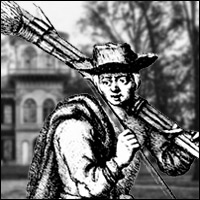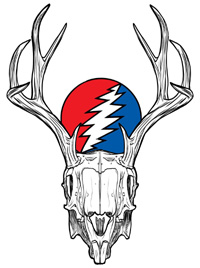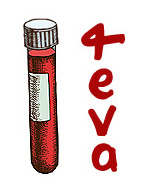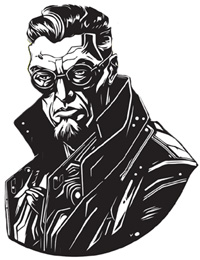2011, Authorhouse, Bloomington, IN, 495 pages
‘Beyond lay the Dead City’
This is a layered review of a layered work. I have read Hammerspace first as a reader, and second as a writer. I am interested in where sci-fi is going. The genre is essentially a patchwork of subgenres joined only by an otherworldly theme. Two years ago I noted a vast change in the landscape of the book shelves in the sci-fi section at the Barnes & Nobles. Female authors have multiplied ten-fold since my youth in this category. The old male science-fantasy authors like Burroughs, Carter, Farmer, Norman, are all but gone, replaced by vampire romance and game-based fiction. Wanting to see where some of these ladies were taking the genre I looked for something serious, about humanity and its future course. Pretty much everything female-authored on the bookstore rack was so highly derivative of Stoker or Tolkien as to quash all interest in my mind, just as most of the male-authored works were game-based or likewise highly derivative.
I went online and found Tau4 by V.J. Waks. Hammerspace is the sequel.
I generally review non-fiction. When reviewing fiction I write the review before reading the conclusion. My litmus test for a novelist is can they get me to crack the last chapter. I have cast aside novels, and re-sheathed movie DVDs, just before the conclusion, because the author had left me with nothing to care about, generally no character connection. I also do not want to give away a novel’s ending. I read the first 47 chapters of this big novel twice, reading Chapter 48 and the Epilogue once.
The Tau4 series is hard to peg as a subgenre. It is technically ‘space opera’ of the mature variety such as Serenity and Pitch Black, as opposed to the adolescent offerings of Star Wars and Star Trek. The Home Worlds/Out Worlds setting is pleasingly vague in relation to us. It is seen from its inhabitants’ prism, not ours. It is not ‘far, far away a long time ago’, or under the grip of our own United Nations ideal thrust out into the Milky Way. Rather, it simply ‘is’ to its inhabitants, permitting the reader to discover the worlds that the characters’ stories unfold on from their point-of-view, which is the point-of-view that matters most in sci-fi.
Ms Waks and I do discuss our work. I have intentionally not discussed her influences where this series is concerned as I wanted to be able to review it based on what she has elected to put on the page. To me there is a bit of ‘steam punk’ here. The worlds of Altair, Sephis and Ismera, strike me as islands in a contested sea of political ambition. The core story itself, that of the Tau4 project, a military genetics initiative, seems as much H.G. Wells [the island of Doctor Moreau] and Mary Shelly [Frankenstein], as anything by Phillip K. Dick or Robert Ludlum. The sci-fi strands make for an intriguing web.
Where Hammerspace really surpasses Tau4 is in the world-building as seen through the unveiling of these worlds through the characters. I like the fact that the original planet in the series now appears teasingly peripheral to what seemed like the periphery at first. This type of unveiled character ignorance concerning their environment is clutch to good sci-fi world building. Most pleasing is the fantasy feel V. J. achieves with the planets of Sephis and Ismera, where signs of layered and extinct societies linger.
There is a little bit of Burroughs’ post-Victorian lost world angst here. I like that the science is obscured, residing in the hands of an elite, and virtually magical to the common people. The ecology is logically and luxuriantly presented, as a dynamic element and a colorful backdrop. Sephis is one of the better dynamic science/fantasy settings since Burroughs wrote the Pellucidar series a hundred years ago. The setting works.
‘Lithe’
The story kernel of the Tau4 series is Gerda Tau, a genetically altered woman. There are a ton of ‘Kill Bill’ possibilities with any such female character. Indeed, with the popularity of mass-murdering female characters in current cinema, and the fact that Ms Waks is a script writer too, I was relived to discover that her heroine was not stacking up the ridiculous video game-inspired body counts that seem to be a must in film these days.
Despite some monstrous qualities, Gerda remains a sympathetic and conflicted character, wrestling with her lethal nature, and her consequently inappropriate sexuality. Gerda Tau is a unique binary character who stands center stage, but is not overworked, being permitted to retain plenty of enigma as the focus is largely on the actions of other characters in the mid-sized cast.
‘The Stillness of Held Breath’
This might horrify Victoria, but I am of the opinion that Hammerspace could be read and enjoyed before Tau4. The characters are introduced and modestly back-storied one at a time, making it doable for a reader to jump into the series at this point. As a sequel, Hammerspace amplifies the root story from Tau4 through the continued and accelerated development of the cast.
Something that sold me on this novel right off the bat was the use of titled chapter headings, some of which are underscored with journal entries and quotes from the protagonists. This is a nice bit of literary scrapbooking that has recently been utilized to good effect by some cutting edge comic writers. As a reader this once common and now rare device of the novelist gives me the sense that each chapter is a story, an episode, not just a place for the storyteller to take a convenient breath. It reminds me of Harry Harrison’s Eden trilogy, where it was also used as a world-building aid.
Hammerspace features more than two ambiguous villains. There is no simplistic comic book duality influence here. I would have to say that my favorite character is Dyle Carzon, who is 40% James Bond and 60% a composite of the various villains that Ian Fleming threw at 007. Overall the characters come with a realistic sense of their own mortality, which negates the need to slaughter them in droves to imbue the narrative with the requisite dread for a griping adventure.
There is a dynamic leading man in the person of Col Adrian. He does not suffer the romanticized objectification that female authors typically heap on the male protagonist [I have trudged through a few romance novels and know what of I write.], and is also not permitted to gallivant around like a Hon Solo type of clown.
What surprised me as an author was the investment V.J., made in new supporting characters, some of whom steal the show at certain points. I can’t say much without giving away some interesting developments. I think, though, that readers will enjoy Erech and Tsimor very much. Erech could work as the protagonist in his own series easily, and I spotted an opportunity provided by the science exposed in reference to the title—which baffled me for a few hundred pages—that offers a believable chance for the author to branch him out of this series.
‘What Comes in the Night’
The author manages this fair-sized and complex cast with a deft use of viewpoint perspective. She is far less blunt with it than George R. R. Martin, who is its primary proponent, and not as profuse with it as some lesser know writers have recently been. This is something that is subtle, and you will notice as an improvement over the narrative in the first book. It is useful in the smooth telling of a story from the varying perspectives of characters who are not physically together in the story arc. Victoria is the first author that I have noticed mixing traditional perspective musing, with the italicized variation, by assigning the traditional method to minor characters. This was very nifty and I hope Victoria develops this further. [I know it was experimental, but it worked—go with it.]
One area in which female novelists tend to outstrip their male counterparts, is in the use of plot turns and perspective shifts. Female readers love this, and many male readers get impatient with it. Victoria comes in at about Louis L A’mour’s level of perspective shifts, which is right on the cusp. Any more frequent and it would begin to read like a soap opera or 1920s film serial. Any less frequent perspective shifts would make it difficult to obscure plot turns and not spoil the ending. This is a daunting dance when you are writing down the middle for a mixed male-female audience.
The narrative elements that V. J. Waks utilizes in her science-fiction seem to reach their smoothest in the person of the Judith Temwold character. Many of us writers imbed a supporting character in the narrative that represents us, our picture-window ego and sense of wonder. I am guessing that if Victoria has done that, then she has constructed Temwold as her narrative avatar.
‘Ages Away’
Hammerspace effectively amps up the Tau4 narrative without making it feel like an overdrawn yarn. As a sequel it’s a top effort, and as a standalone novel holds up better than most mid-series efforts.
Above, the reader has certainly noticed a lot of discussion of the nuts and bolts of a story that in reading comes off as a flowing whole. I approached the review in that manner because Victoria and I do discuss our techniques and bounce ideas off of each other before and during composition. When I told her that I would review Hammerspace without reading the last chapter she asked me to read the last chapter, so that I could lodge an opinion in the review as to how I think she might proceed with the series, logistically speaking. In this new era of self-published authors we don’t always have editors to tell us what to do, and often require some feedback from our fellow writers. Some readers have been writing her with queries about the next offering it seems.
I have no idea what Victoria has in mind and how far out she has projected the Tau4 series. Realizing that she isn’t a commercial writer content to crank out ever more spins on a neverending theme, I have these thoughts.
If V. J. Waks called me up and said, “Look kiddo, I need you to finish the series, and if you do a good job I promise you a date with Scarlet Johansen—or a reasonable Hollywood-quality facsimile. First I need you to submit a scheme based on what you’ve read in Tau4 and Hammerspace.”
After pretending not to be eager for a week, I would submit the following:
1. A prequel, on the light side, not a big novel
2. Two more sequels, first the shortest novel in the series, and then the longest
3. Write Erech out of the series and feature him in a series of novellas and novelettes that could be bundled into a big book later.











